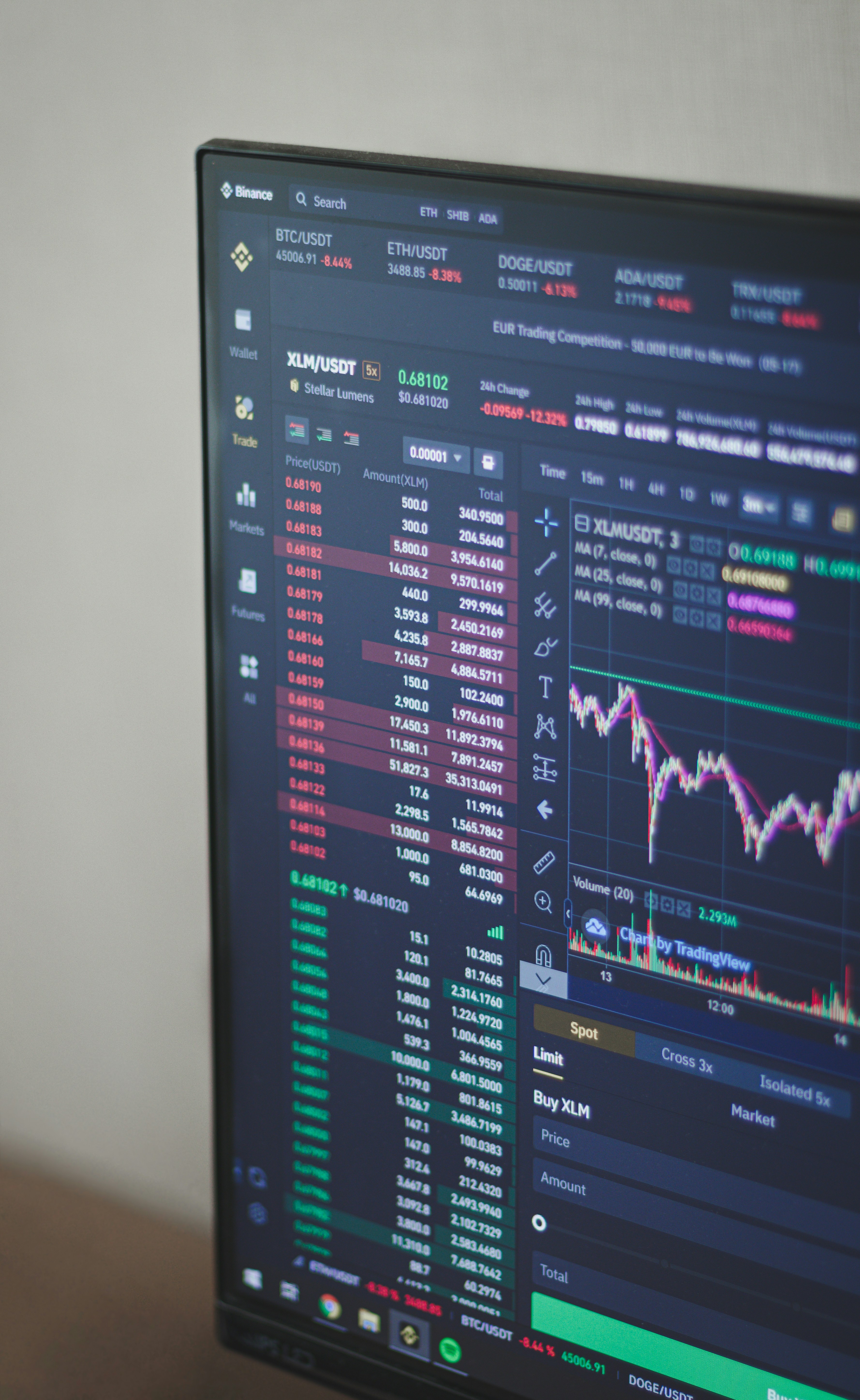Every new trader dreams of turning a small amount of money into consistent profits through day trading. You might have seen social media traders claiming to start with just $100 and make thousands of dollars weekly. Most beginners ask the question: How much money do I need to start day trading and profit massively? This question does not have a direct answer, as many factors affect how much you need to trade.
This guide helps you understand how much you need, what's legally required, and how you can begin, even with a small account, and the best strategies to maximize your profits.
What You Should Know Before Day Trading
The capital you need to start day trading goes beyond just the funds needed to execute trades. Other factors should also play a role in your budget.
Set a Wise Trading Budget
First, you need capital that can help you place meaningful trades, manage risk, and execute your strategies successfully. Day trading is such a fast-paced venture; therefore, you need to set a substantial amount of money that helps you trade successfully while managing risks and losses.
A substantial amount of money should be available in your trading account so that you can place trades easily, keep up with trends or strategies you are using, and have the necessary flexibility to adjust your strategies when market conditions change. Your trading capital should also include funds that cover transactional fees, operational costs, commissions, taxes on profits, as well as accumulated losses.
The amount of money you need to start day trading also depends on the market you want to trade, your risk tolerance, and what strategy you are deploying for your trade.
Set a Goal
Secondly, before allocating capital for day trading, you have to set a goal and define your purpose. Are you looking to earn a little extra income, replace your full-time salary, or build long-term wealth? Each objective requires a different level of investment. If you are aiming to make an additional income a month, you will need to commit less capital than someone pursuing day trading as a full-time career. By clarifying your purpose, you can determine the ideal starting amount that aligns with your financial goals and risk tolerance.
Access Risk Tolerance
Thirdly, you have to understand that how much risk you're comfortable taking is key to deciding your starting trading capital. Conservative traders usually need more funds so they can take smaller positions and limit their risk exposure to about 1–2% per trade. On the other hand, aggressive traders may take on higher risks, but they still need enough capital to handle a series of potential losses without wiping out their account. Be honest with yourself about your risk appetite, and never trade money you can't afford to lose.
Start Small
If you do not have a large amount of money to risk, you can start small. Many seasoned traders advise starting with a small amount instead of committing a large sum upfront. This allows you to learn the ropes, test strategies, and build consistency without taking major losses. As your experience grows and your performance improves, you can gradually increase your trading capital. This steady, disciplined approach helps protect your funds while promoting sustainable skill development.
RELATED READ: Day Trading: Basics & How to Calculate Profits Step by Step
How Much Money Do You Need to Start Day Trading?

There is really no set amount of money needed; trading capital might differ based on trading needs and the market.
For stock traders, the Pattern Day Trader Rule (PDT Rule), set by the Financial Industry Regulatory Authority (FINRA), enforces the minimum capital a trader needs to have before placing a trade. This rule states that traders must maintain a maximum of 25,000 dollars in their accounts. To successfully execute five to six trades within a week, this is the minimum amount traders are required to have. This rule ensures that traders have sufficient capital to place trades, make transactions, and handle trade losses. Some brokers typically restrict your account for up to 90 days if you do not meet these balance requirements. The rule is set to protect investors from excessive risk that comes with trading and ensure those with sufficient capital can place a trade.
But if $25,000 PDT rule feels out of reach for you, especially as a beginner who might not have much money to commit, you can bypass this rule and trade with small amounts by:
Ways to Bypass the PDT Rule
- Get a Cash Account: You can get a cash account to trade with; however, your trades are limited as you will need to wait for your trades to settle within one business day before you can use the funds for trading again the next day.
- Offshore Accounts: You can get an account with brokers outside the U.S., such as in Europe, the UK, Singapore, Hong Kong, and even Caribbean countries. They do not enforce this rule. You can get an offshore account with their brokers and start trading with as little as $500.
The forex markets allow traders to start with lower capital; a minimum deposit of $500 is acceptable. However, keep in mind that the lower the capital, the less meaningful the amount of trade you can place. You might need to get your account to $1000 or $2,000 to be able to place meaningful trades and manage risks effectively.
If you are trading futures, the minimum amount needed to start daytrading is $2,500, with a recommended amount of $10,000. While options traders are required to have a minimum amount of $2,000, and a recommended amount of $5,000.
NOTE: Day trading is a risky venture, and therefore, it is advised to risk only disposable income, that is, money you can afford to lose without affecting your finances.
Hidden Costs in Day Trading
Beyond your starting capital, day trading comes with additional expenses that many beginners overlook. These hidden costs can affect your profits and overall performance:
- Brokerage and Transaction Fees: Even with commission-free brokers, you may still pay small fees on margin interest, withdrawals, or premium data.
- Trading Software and Data Feeds: Professional charting tools, indicators, and real-time data often come with subscription costs.
- Technology Setup: A fast and reliable laptop or desktop, dual monitors, and high-speed internet are essential for quick trade execution.
- Taxes: Profits from day trading are usually taxed as short-term capital gains, which can be higher than long-term investment tax rates.
Understanding these expenses helps you create a realistic budget and avoid the shock of seeing your profits reduced by overlooked costs.
RELATED READ: Is Day Trading Profitable? (2025 Guide)
Can You Start Day Trading with Less Money?
Yes, but this comes with its own limitations. You can start day trading with as little as $100 to $1,000, but profits will be small, and you'll need to manage expectations.
Here's what you can do:
Strategies for Small Account Trading
- Trade with $100–$500: Starting with a small amount like this is ideal for learning, not for living off profits. You can start small and then scale up as you get stronger in trading.
- Choose commission-free brokers like Webull or the Robinhood app, that way you cut down on paying commission fees.
- Focus on low-cost assets, such as penny stocks or fractional shares.
- Consider Low-Cost ETFs that offer diversification benefits even with small amounts.
- Focus on One Market: Stick to one asset class; you can choose to focus on only forex or crypto, where smaller accounts can still find good opportunities.
- Use Low-Risk Trading Setups: Trade with small position sizes to minimize risk. Never risk more than 1–2% of your capital per trade.
Other Alternatives to Day Trading
If you don't yet have the capital required to day trade confidently, there are safer and more affordable ways to build experience and skills in day trading. You can deploy these alternatives to test the waters and learn before committing your capital to day trading.
Paper Trading
Platforms like Webull or Robinhood let you practice in a simulated environment using virtual money. You'll gain experience without risking your funds.
Swing Trading
Instead of buying and selling within the same day, swing trading allows you to hold positions for a few days or weeks. It requires less capital and gives you time to analyze trades without pressure.
Prop Trading Firms
Proprietary trading firms fund skilled traders with company capital. You start with a small fee to take an evaluation challenge, and once you pass, you can trade using the firm's funds and keep a share of the profits.
Education and Mentorship
Before investing thousands, consider investing in your learning. There are affordable courses, trading communities, and online mentors who can help you develop a strong foundation before you fully start placing a trade.
Learn 50+ Day Trading Terms Every Trader Should Know (Beginner-Friendly Guide) Here
Final Thoughts
So, how much money do you need to start day trading in 2025? The answer depends on your trading goals, risk tolerance, and the market you choose. For U.S. stock traders, the Pattern Day Trader Rule requires at least $25,000 in a margin account. However, if you're trading forex, crypto, or futures, you can start with as little as $500–$2,500.
If you're beginning with a smaller amount, don't rush. Focus on learning strategies, managing risk, and building consistency before scaling up. Day trading success doesn't come from the size of your account; it comes from discipline, patience, and experience.
Start with what you have, practice with paper trading platforms, and grow your skills over time. The goal isn't just to start trading, but to stay profitable long-term.
If you are a beginner, here are the Top Day Trading Courses in 2025: Best Picks for Beginners & Serious Traders
Frequently Asked Questions
Can you start day trading with $500?
Yes, but your profits will be small. You can trade fractional shares or crypto on apps like Webull or eToro. However, you'll face limitations if using a U.S. margin account due to the PDT rule.
Why do you need $25,000 to day trade in the U.S.?
The FINRA Pattern Day Trader Rule requires accounts with frequent day trades to maintain a $25,000 minimum to reduce excessive risk-taking and ensure traders can cover potential losses.
What's the best way to day trade with a small account?
Start with a cash account to avoid PDT limits, use low-risk strategies, or join a prop trading firm to access larger capital. Paper trading is also a smart first step.

Follow Us On Social Media